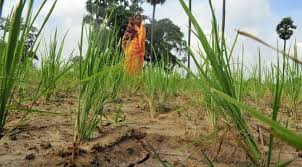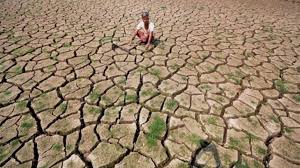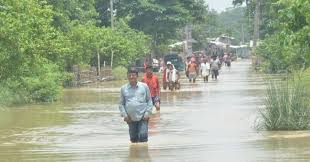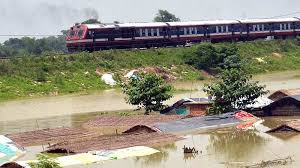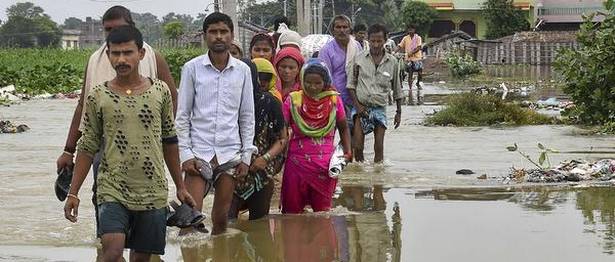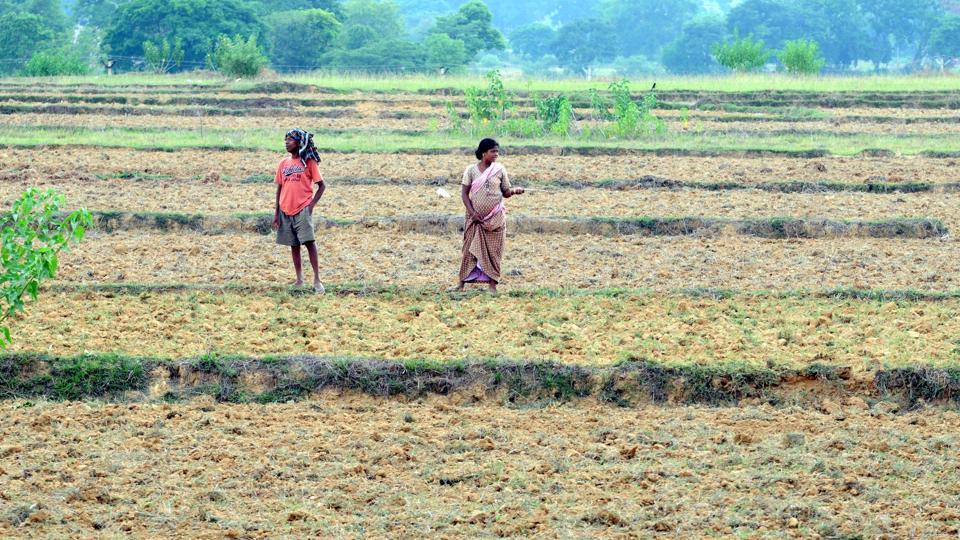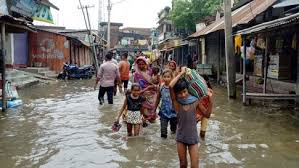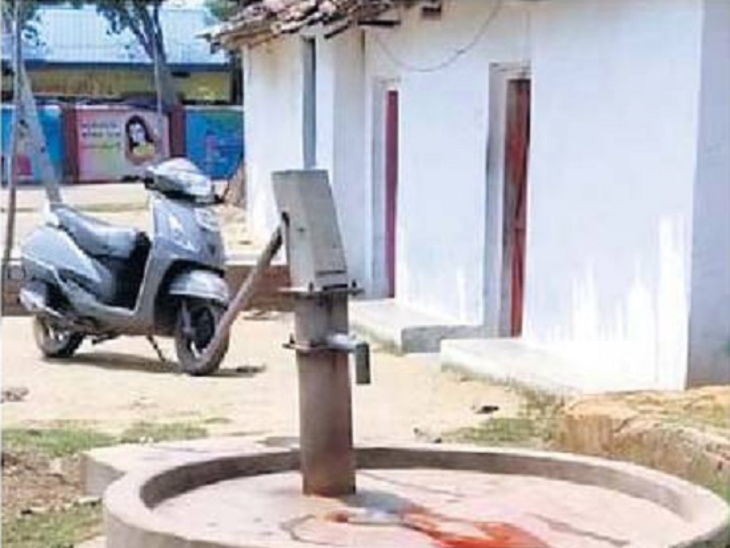Source: economictimes.indiatimes.com
NEW DELHI: Northeast India and Bihar continued to battle flood fury on Saturday as the death toll due to rain-related incidents crossed the 150-figure mark while flood-like situation prevailed in seven districts of Punjab.
The flood waters showed a receding trend in Assam, however, the toll rose to 59 with 12 more deaths reported on Saturday. The number of affected districts came down to 24, officials said.
The waters of the deluge, which wreaked large scale devastation across the state, receded from Baksa, Hojai and Majuli districts but continued to submerge 1.51 lakh hectare of crop land and a large part of Kaziranga National Park, where 10 rhinos have been killed.
According to the Assam State Disaster Management Authority (ASDMA) flood bulletin, five deaths were reported from Morigaon district, three from Barpeta, two from South Salmara and one each from Nalbari and Dhubri districts during the day taking the toll to 59.
A total of 44,08,142 people are hit in at least 3,024 villages in the affected districts of the state.
The ASDMA bulletin said over 1.32 lakh displaced people are still in 689 relief camps and 240 relief distribution centres set up by the district administrations.
In Kaziranga National Park, a World Heritage site, the flood water level recorded a drop of 138 cm.
The calamity has claimed the lives of 129 animals, including 10 rhinoceros, 62 hog deer, eight sambhar deer and an equal number of wild boar, five swamp deer, two porcupines, an elephant and a wild buffalo since July 13.
The Brahmaputra is flowing above the danger level at Neamatighat in Jorhat district, Goalpara, Dhubri, Dhansiri at Numaligarh in Golaghat district and Kopili at Dharamtul in Nagaon district, the ASDMA said.
Many of the flood affected complained to the state Finance Minister Himanta Biswa Sharma that they have not been provided with adequate relief items or accommodation in the relief centres.
With five more deaths, the death toll in Bihar floods reached 97, the state’s disaster management department said.
Four deaths were reported from Madhubani district which accounted for 18 casualties and one from Darbhanga where a total of 10 people died in the deluge.
Sitamarhi, with 27 deaths, remained the worst-affected district, the disaster management department said in its report.
Deputy Chief Minister Sushil Kumar Modi toured Sitamarhi to take stock of relief and rehabilitation work in the district on Saturday.
A total of 12 districts of Bihar have been affected by flash floods that have hit the state in the wake of torrential rainfall in the catchment areas of neighbouring Nepal last week.
Two people have died so far and four, including three fishermen from Tamil Nadu, are missing as heavy rains continue to lash Kerala, with Kudule in Kasaragod district recording over 30 cm of rains till Saturday.
In the hilly Idukki district, a minor landslide occurred Saturday morning at Konnathady village, causing crop loss. There were no casualties, official sources said.
People have been advised against travelling in hilly areas, they said.
In the northernmost Kasaragod district where red alert has been issued, Kudule recorded 30.6 cm rainfall and Hosdurg 27.7 cm in 24 hours till 8:30 am Saturday, the sources said.
The Kariangode river is in spate and has changed its course, flooding 50 houses in the vicinity, and people have been shifted to relief camps.
The national capital was lashed by heavy rain bringing relief to the people from the humid weather.
The minimum temperature was recorded at 28.8 degrees Celsius, a notch above the season’s average. Humidity was recorded at 74 per cent at 8.30 am.
Rains lashed most parts of Punjab and Haryana on Saturday, bringing the maximum temperature in the region below normal.
Karnal and Amritsar received 58.2 mm and 13 mm of rainfall respectively, the Meteorological Department said.
Chandigarh, the joint capital of Punjab and Haryana, received 2 mm rainfall.
The maximum temperatures in the region fell one to three notches below normal, the MeT department said.
The rains inundated the low-lying areas and led to a flood-like situation prevailed at some places in seven districts of Punjab with the seasonal Ghaggar river posing a threat to the standing crop, including cotton and paddy.
The weatherman has predicted light to moderate rain at several places in the region during the next 24 hours.
Light to moderate rain occurred at many places in Himachal Pradesh as the meteorological department issued a yellow weather warning for heavy rain in plains, low and middle hills of the state on July 24, the official said.
He said monsoon rains are predicted till July 26.
Till Saturday, Mashobra in Shimla district has received the highest 26 mm rain followed by Rohru (21 mm), Kotkhai (15 mm) and Sujanpur Tihra (12 mm).
The highest temperature in the state was recorded in Kangra at 33.8 degrees Celsius, whereas the lowest was recorded in Keylong administrative centre at 9.4 degrees Celsius.
In Uttar Pradesh, dry weather prevailed in Lucknow, a meteorological department official said, adding that rain is likely to occur at isolated places in the state next week.
At 39 degrees Celsius, Banda was the hottest place in the state, the official said.
The met has forecast rain at isolated places in eastern and western Uttar Pradesh on July 22 and 23.
On Saturday, Sultanpur recorded 15 mm rain followed by 6 mm in Hardoi and traces of rain in Aligarh, the met department said.
